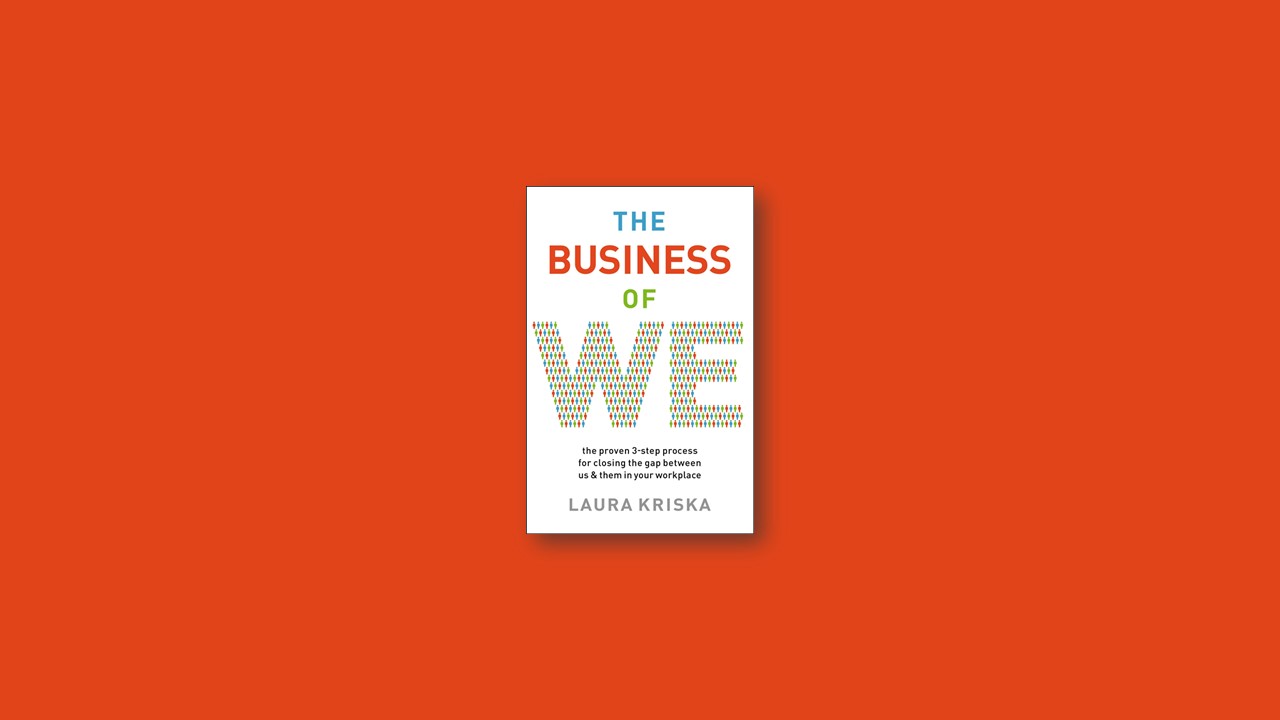Diversity Can Be Divisive
We are part of a diverse and deeply interconnected marketplace. In the course of a few months in late 2019 and early 2020, a global pandemic impacted the health of hundreds of millions of people, devastating financial markets on every continent and substantially altering daily life for billions of people around the world. Shortly thereafter, protests around the world broke out demanding racial justice and an end to oppression of Black people in America
Learning how to work across differences is more important now than ever before. Our goals may be as critical as discovering a vaccine or repairing racial divides or as inconsequential as meeting someone for the first time. No matter what problem we are trying to solve, a WE-mindset will benefit us all.
The Obstacles to Achieving Cultural Intelligence
When leaders expand the definition of WE to include everyone in the organization, independent of specific roles, rather than perpetuating Us and Them divisions, new norms of inclusion begin to take shape.
There are five specific behavioral strategies leaders can use to overcome apathy and resistance. Let’s take a look at each of these categories and understand the reasons behind them.
#1. Show Enthusiasm for the Entire Team
Showing enthusiasm for the entire team is essential. Leaders must be aware of the different mandates that people and departments have. Leaders also must advance the belief that every department and every person in the organization has a specific role to play in achieving overall goals. Spending time via formal meetings or informal conversations reflects the value a leader places on different people and departments. Making an effort to distribute time and attention across the entire organization contributes to a stronger sense of WE.
Leaders must also demonstrate that they are broadly connected throughout the organization, rather than only with a small group of like-minded people. If, for example, a leader only has lunch with a particular few, then they may be viewed as prioritizing some over others. Even knowing people’s names and using those names is a way to recognize a broader group of contributors.
#2. Assume They Are Not Above Cultural Data
no matter what decade or century you are living in, listening to people from a younger generation is difficult for older people, and understanding the mindset of older generations is hard for younger people. Every sixty-year-old has been twenty-five. When it relates to the workplace, we older folks firmly believe that we know what it’s like to be young. We also firmly believe that our additional thirty-five years of experience is valuable.
Like generations before us, these years of experience translate into an assumed superiority in our own minds. But in reality, a sixty-year-old in 2021 often has little firsthand understanding of what twenty-something consumers or employees want, because so many societal factors have changed. As any young adult can tell you about their own parents, “they just don’t understand my generation.”
No matter what the era, those with more years of experience tend to look down on those with fewer years of experience. People who identify with the younger group look at the older group as “out of touch” and “outdated.” But generational gaps, like other culture gaps, can be bridged with deliberate effort.
#3. Prioritize Cultural Data Before There Is a Crisis
Leaders of corporations in any industry need to prioritize cultural data before they are in the middle of a catastrophe by recognizing that culture is a relevant factor in everyone’s life. Finding ways to see cultural norms, especially when those norms are different from your own, is essential.
As leaders improve their understanding of different cultural norms, both visible and invisible, they will also begin to understand what constitutes a violation of those norms.
When a diverse and educated leadership team makes culturally informed decisions about products, campaigns, and other business initiatives, they are more likely to prevent a crisis from developing in the first place.
Tips for continual awareness of cultural data:
Assume cultural norms are always at play, even if you cannot see and hear them.
Actively use the iceberg concept of culture to access invisible data.
Proactively seek advice and counsel from people who understand or come from different relevant cultural groups.
Actively include input from individuals from underrepresented and relevant cultural groups.
#4. Broaden the Definition of Culture
Some organizations literally see culture in black and white. They don’t look beyond the most obvious factors, such as nationality, and recognize the wide range of differences that can create culture clashes. It is much easier to identify a culture gap when it corresponds with a national boundary or a different language.
But culture gaps occur due to differences over any aspect of identity. Prada and Adidas had problems because they failed to deeply understand aspects of Black culture. The #MeToo movement is a result of decades of inequity, disrespect, and mistreatment of women. The phrase “Okay, Boomer” revealed the cultural discord between an older generation, who complain about the entitled, overly confident, gender-fluid, tech-savvy younger generation, and those younger people who value their work-life balance and have little tolerance for the regressive, inflexible mindset of those old folks.
Cultural catastrophes occur because people fail to recognize that culture is broadly defined by any factor of identity.
It is important to recognize that many factors contribute to a person’s cultural identity, and consequently, cultural gaps and conflict can appear anywhere.
#5. Bust the False Narrative That Proximity = Integration
Attorney and social activist Bryan Stevenson writes in his best-selling book, Just Mercy, about an episode that happened to him in an Alabama courthouse. Stevenson, a Black man, had arrived early to prepare for an appearance on behalf of a client. When the judge and prosecutor, both white men, entered the nearly empty courtroom, the judge took one look at Stevenson and told him to go outside and wait for his lawyer because he was not allowed to be in the courtroom alone.
For the first twenty years of my career, Laura worked exclusively with the American branches of Japanese organizations that on paper looked like diverse workplaces with high numbers of both Japanese and American employees. However, she saw firsthand that these two groups were not well integrated at all. In fact, proximity to one another was as far as integration got in some cases.
In one company, a Japanese manager, Mr. Taguchi, who spent hours and hours working every day within a few feet of five American employees, never had more than a simple conversation with any of them in over three years. When Laura spoke with Mr. Taguchi in Japanese, he was personable and warm. We discussed many topics including baseball, his family, and opera, which he loved. But Mr. Taguchi made no effort to speak about non-work topics in English with his staff. His failure to engage prevented him from developing a trusting relationship with his colleagues.
Ongoing Process
Apathy and resistance will never disappear entirely. Fostering a WE culture requires ongoing vigilance, somewhat like achieving a weight goal requires monitoring on a regular basis. But just like establishing healthy eating, once best practices are in place, the maintenance of the desired outcome is a lot easier.
And just like trying to lose weight, there will be ups and downs when it comes to adjusting past behaviors. Change is hard for leaders, too. Leaders should be vigilant, but they don’t have to be perfect. Sharing your struggles with Us and Them gaps can be inspiring to others because they, too, will struggle. Celebrating collaborative efforts, big and small, will motivate others because enthusiasm over successful outcomes is contagious.


